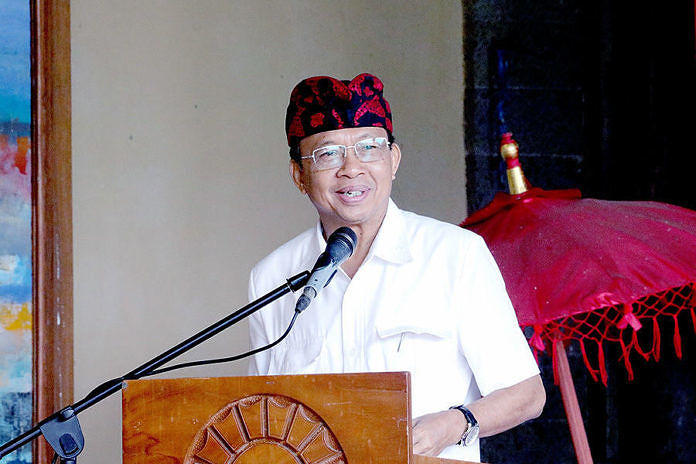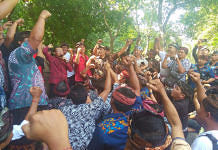
DENPASAR, BALIPOST.com — The discourse of the train construction in Bali has been rolling out for a long time and had been reaping the pros and cons. Having been fading for long enough, this discourse emerges again in the era of leadership under Governor of Bali, Wayan Koster. The infrastructure will later be built with a KPBU scheme (Government and Business Entity Cooperation), while the priority route is Mengwitani-Singaraja.
“It’s been a long time and the study has already existed. However, we return it to the people of Bali. If we need it, we will realize it, and if we don’t need it … it does not matter,” said Governor Wayan Koster, when confirmed on Friday (May 17).
However, continued Koster, Bali in the future requires mass transportation modes. One of the alternatives is the train. Although there has been public transportation, the route is not right or does not connect between the regions in the context of real needs.
“If there is a lot of interest in the future, in my opinion, the current (public transportation) is no longer enough. It has to be equipped with other modes of transportation,” added this Chairman of the PDIP Bali.
When separately interviewed, Head of the Bali Transportation Agency, I Gde Wayan Samsi Gunarta, said the first feasibility study (FS) made by the ministry is under discussion. Detailed Engineering Design (DED) for the Mengwitani-Singaraja train is being prepared. However, the level of feasibility apparently remains inadequate technically. For example, if passing Bedugul to the north, the upgrade is too high, and if forced it requires a longer tunnel. His agency then looked for opportunities for other traces. Even if there is a tunnel, it can be made not too long.
“There are several other studies, which actually do not refer to trains. There are studies related to highways and so on by using other traces,” he said.
According to Samsi, the trace is considered to be more moderate or better. This means that gradients have more prospects than before. Then, for financing schemes it will use KPBU, but solicited where the government serves as the initiator, then it will be auctioned in the form of an investment auction. He said that train plan in terms of socio-cultural aspect had good acceptability in accordance with the results of the study. Moreover, the existing public transportation, all of them use road infrastructure.
Meanwhile, the road conditions already had traffic congestion with the ratio of the number of vehicles and residents almost 1 to 1. In this case, Bali is saturated in terms of vehicle growth. Data from the Bali Public Works and Spatial Planning Agency show that in Bali there are 629.39 km of national roads, 743.34 km of provincial roads, and 5,391.43 km of district / city roads.
Actually, for motorized vehicles according to the data of the Bali Revenue Service in the past five years there were 3.2 million units. Of that amount, around 2.7 million are motorbikes and only around 500,000 units are four-wheeled vehicles and above. “So the choice is actually to increase capacity,” he added.
To enlarge capacity, continued Samsi, it can indeed be added to the network. For example, it uses another road by repairing and enlarging its capacity or using high-speed toll roads. But we can also use mass transport such as trains. Indeed, the transportation at the beginning will definitely take time for the community to make adjustments.
He did not dismiss there is possibility if the train will be empty of passengers at the beginning of its operation later.
“The service must be done optimally first because the demand is greatly influenced by the performance of existing services. If this happens, well … we actually can’t automatically expect in the early stages to be full. Almost everything runs like that,” he explained.
Samsi added the train to be built in Bali is likely to be electrified. It can be in the form of LRT, electric trains, or other modes as developed in many countries such as autonomous rail rapid transit, and may also use metro type capsules that have been developed domestically. All technologies must be verified first to determine which are more likely to be applied. It takes around three years from the planning stage to realization.
“But now, we have other models or schemes that can be applied. Depending on the speed, we can prepare, for example, whether our initial study can be prepared faster or not,” he explained.
When talking about the budget needed, Samsi has not been able to say the exact figure because it is very much determined by the tract that will be used later. (Rindra/balipost)




